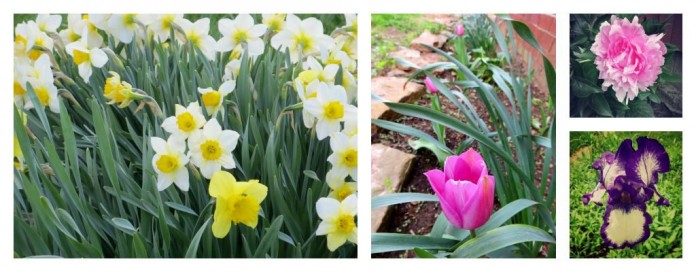Nothing says spring like flowers sprouting from freshly thawed earth. Planting spring-flowering bulbs in early fall allows roots adequate time to develop before the ground freezes. A good garden design includes several species of flowers with staggered bloom periods to keep your garden colorful all season long.
Selecting flowers for fall planting
The term bulb is often to describe bulb-type plants: true-bulbs, corms, tubers, rhizomes and other rootstock. Tulips and daffodils are examples of true-bulbs. Crocuses are corms. Irises are rhizomes. Peony rootstock is planted in divisions. All of the above are hardy perennial bulb-type flowers. Hardy perennials are low maintenance plants that go dormant in winter and return to bloom every year.
Only hardy perennial bulb-types are planted in fall. Gladiolas, begonias and other summer-flowering bulbs are non-hardy. The bulbs must be dug up and stored over winter.
When selecting flowers to plant this fall, pick large, firm, quality stock. Small nicks and loose skins don’t decrease plant quality, but mold and soft spots do. Store stock in a cool and dry environment until you are ready to plant.
How to plant and care for bulbs
- A garden location with 6+ hours of direct sunlight and good drainage will help your flowers thrive. Prepare garden bed by amending soil pH, fertility and texture as required.
- Plant bulb, tip side up at the depth indicated on the planting guide. As a general rule, small bulbs are planted 1-2”, medium 2-4”, and large 4-6” deep.
- Cover with displaced soil.
- Water thoroughly.
- If you amend soil with compost or fertilizer when you prepare your garden bed you do not need to apply additional fertilizer in fall.
- After ground freezes apply a 3-4” layer of mulch to control soil temperature and protect your stock from damage over the winter.
- In spring apply a slow-release single application of fertilizer.
- Remove spent flowers after bloom to direct energy back to roots.
- Cut plants to ground before winter and add additional mulch to insulate and protect roots.
How to divide bulb-type flowers
Perennial flowers return every year and spread easily. Over time garden beds become crowded, with fewer and less vibrant blooms. Dividing stock will keep your flower beds at peak performance. Most perennials should be divided every 3-4 years.
- After the season has ended, dig up stock and divide.
- Keep the best and biggest bulbs. Discard any damaged portions.
- Replant with greater room to spread or share with fellow gardening friends.
Related: How to divide peonies













